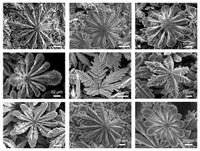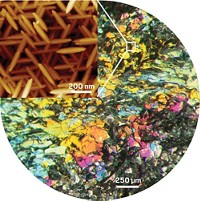Advertisement
Grab your lab coat. Let's get started
Welcome!
Welcome!
Create an account below to get 6 C&EN articles per month, receive newsletters and more - all free.
It seems this is your first time logging in online. Please enter the following information to continue.
As an ACS member you automatically get access to this site. All we need is few more details to create your reading experience.
Not you? Sign in with a different account.
Not you? Sign in with a different account.
ERROR 1
ERROR 1
ERROR 2
ERROR 2
ERROR 2
ERROR 2
ERROR 2
Password and Confirm password must match.
If you have an ACS member number, please enter it here so we can link this account to your membership. (optional)
ERROR 2
ACS values your privacy. By submitting your information, you are gaining access to C&EN and subscribing to our weekly newsletter. We use the information you provide to make your reading experience better, and we will never sell your data to third party members.
Physical Chemistry
Quasicrystals In Nature
Search turns up oddly ordered crystalline grains in Al-Cu-Fe minerals
by Mitch Jacoby
June 4, 2009

In the 25 years since quasiperiodic crystals were first proposed to exist, scientists have observed and studied more than 100 examples of these oddly ordered materials. All of them were synthesized in laboratories—until now.
An international research team has found a quasicrystal in a naturally occurring mineral sample originating in Russia (Science 2009, 324, 1306). The finding broadens the range of natural atomic structures and could provide clues that lead scientists to synthesize new kinds of quasicrystals.
Quasicrystals are ordered solids that lack periodicity, meaning their structures cannot be depicted by a geometric pattern of atoms that repeats in three dimensions at fixed intervals—a description of ordinary crystals. Typically built from multicomponent alloys, quasicrystals often exhibit five- or 10-fold rotational symmetry, a condition that's theoretically forbidden in conventional crystallography.
After years of searching, Luca Bindi of the Museum of Natural History, in Florence, Italy, and Princeton University's Paul J. Steinhardt and coworkers Peter J. Lu and Nan Yao discovered fivefold symmetry in micrometer-sized quasicrystal grains in samples of khatyrkite and cupalite. The Al-Cu-Fe-based mineral specimens in the Florence museum are reported to have come from the Koryak Mountains in Russia.
"Only because of Luca's stubborn determination and willingness to test every part of the sample was the quasicrystal found. It's a miracle, really," Steinhardt says.




Join the conversation
Contact the reporter
Submit a Letter to the Editor for publication
Engage with us on Twitter